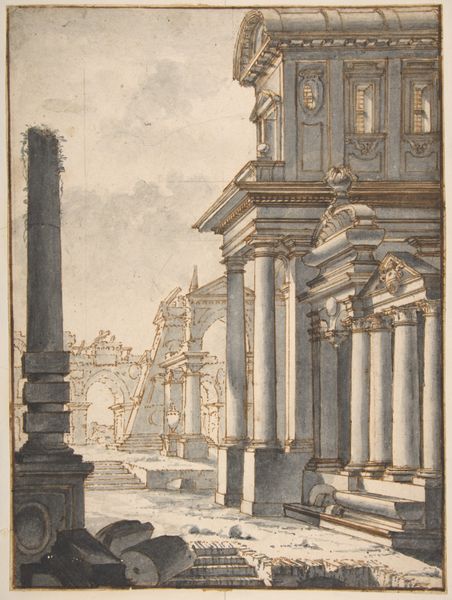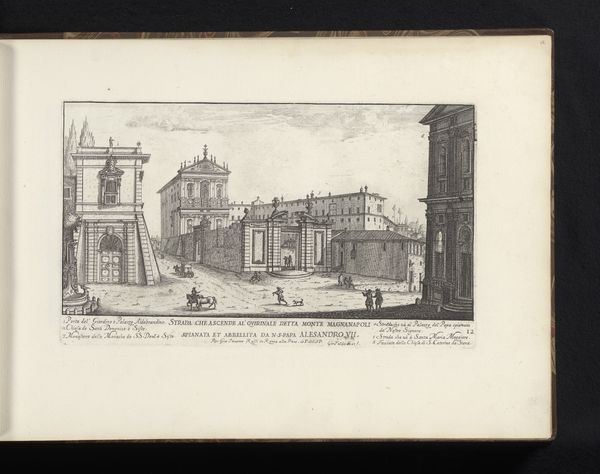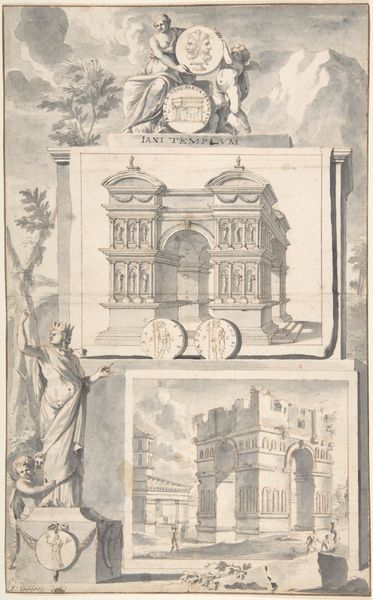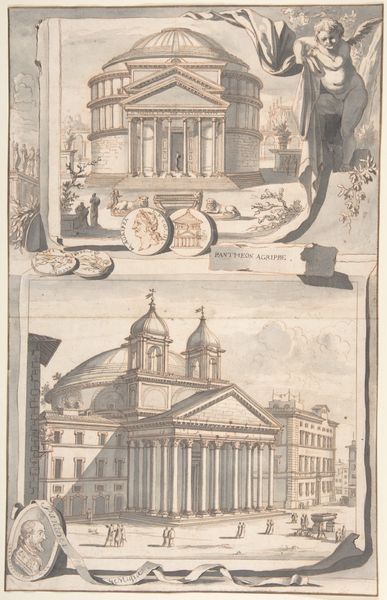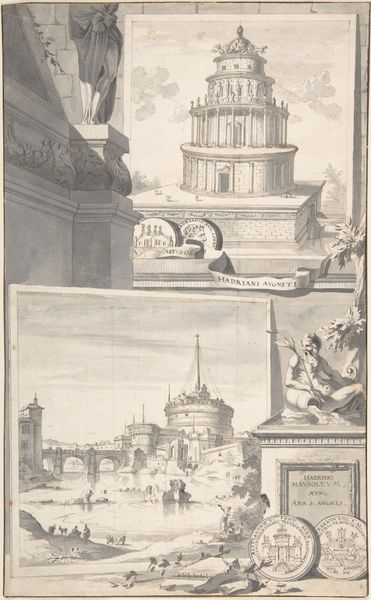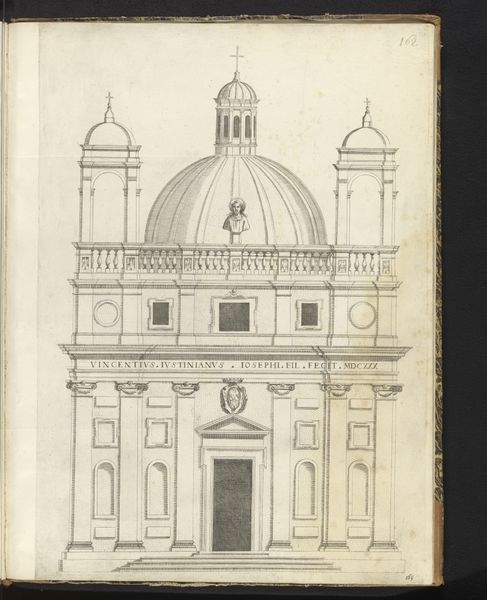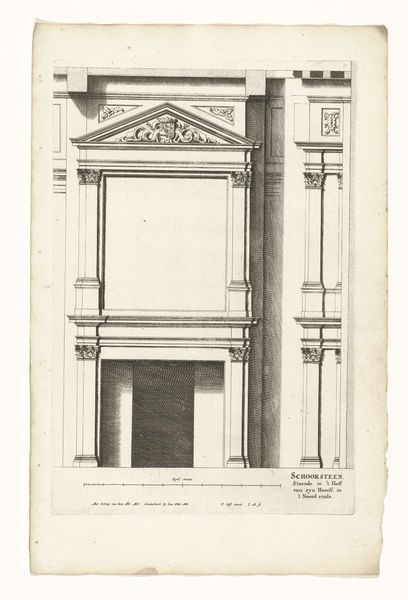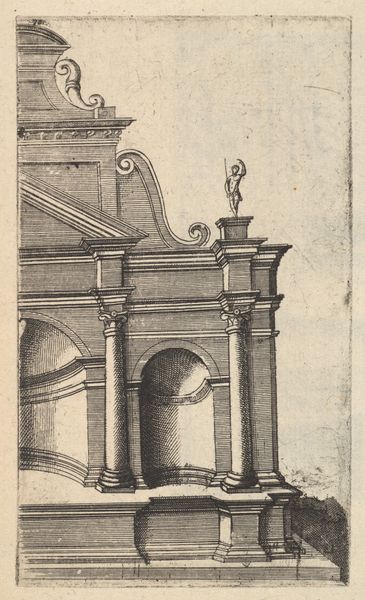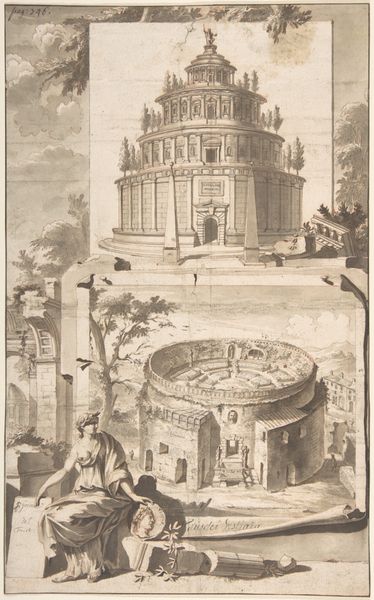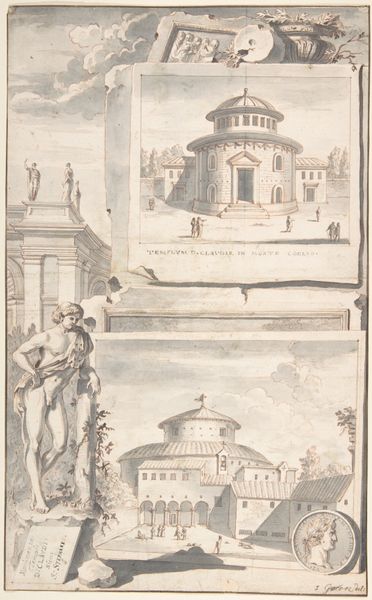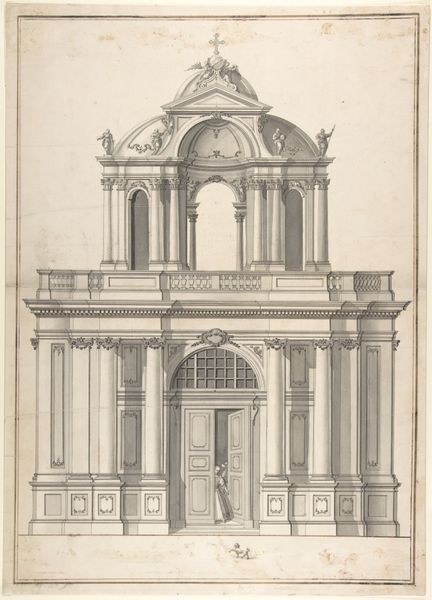
A Reconstruction of the Temple of Romulus and Remus (above) and a View of the Ruins (below) 1690 - 1704
0:00
0:00
drawing, print, engraving, architecture
#
drawing
# print
#
landscape
#
romanesque
#
cityscape
#
engraving
#
architecture
Dimensions: 13 x 8 1/4 in. (33.0 x 21.0 cm)
Copyright: Public Domain
Curator: What a compelling contrast between idealization and reality! Jan Goeree's print, dating from 1690 to 1704, depicts "A Reconstruction of the Temple of Romulus and Remus" above, paired with "A View of the Ruins" below. Editor: Immediately, there's a poignant duality—the idealized architectural form above evokes order, symmetry, and an almost ethereal grace. It's strikingly different from the palpable decay and material breakdown of the lower image. Curator: The upper section exhibits a Romanesque style with an emphasis on balanced geometry and harmonious proportions. Observe the calculated placement of each architectural component, indicative of Goeree’s formal training and command of perspective. Editor: Exactly! The print medium, particularly the engraving, serves Goeree’s project of elevating a bygone structure. It draws our eye to the visible textures in the ruins through labor-intensive marks, evidence of human actions. Think about the physicality involved in creating the prints, from the copper plates to the inks... it highlights Rome’s transformation over time. Curator: Indeed. We must recognize that this portrayal, through line and form, offers a vision that is mediated by cultural ideals. The artist employs linear precision to create a clear articulation of form and space that aligns with classical concepts of beauty and order. Editor: I wonder about the distribution and reception of such prints in that era. Were these aimed at scholars? Tourists? And who controlled access to these visual interpretations of cultural heritage? The work's materiality provokes further thought on the socio-economic factors behind image-making itself. Curator: Well, by contrasting ideal form with decaying remnants, Goeree constructs a dialectic around the enduring power of classical architecture. There's an undeniable allure of antiquity being methodically reconstructed through careful draftsmanship. Editor: A clever tactic, presenting architectural dreams adjacent to physical truths of the built world and its inhabitants, both past and present. Curator: It certainly leaves us contemplating the complex interplay between ruin and representation. Editor: Precisely, and it underscores the social life and long and complicated afterlives of art, architecture, and ideas.
Comments
No comments
Be the first to comment and join the conversation on the ultimate creative platform.
